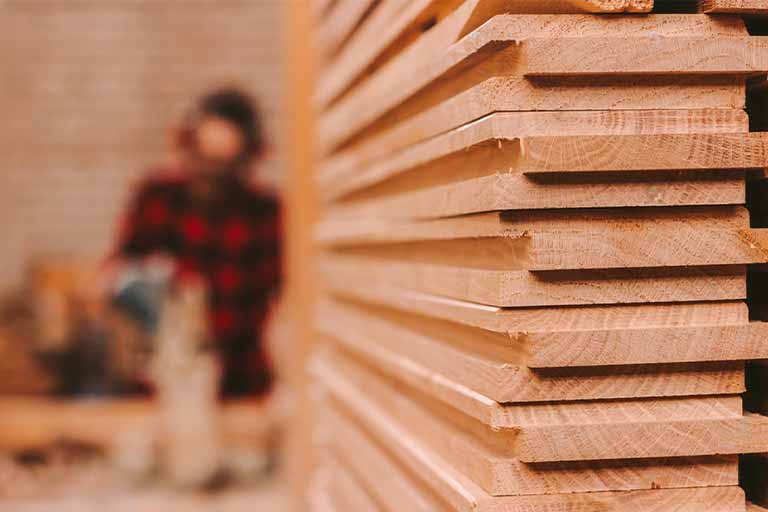
The Properties and Characteristics of Plywood
The Properties and Characteristics of Plywood
Plywood is a popular material known for its versatility, strength, and durability. It is used widely in residential, commercial, and industrial settings, and offers a range of benefits over other materials including cost-effectiveness, ease of use, and a wide range of applications. In this article, we will discuss the various properties and characteristics of plywood. We will explore its composition, grades, strength and durability, applications, finishing and treatment options, and sustainability.
Plywood is a type of engineered wood product made from thin layers or “plies” of wood veneer that are glued together with a strong adhesive. Plywood is an ancient invention, with evidence of its use dating back to ancient Egyptian times. The modern plywood industry began in the early 20th century, and today, plywood is one of the most widely used construction materials in the world. Plywood is used in various industries such as construction, furniture, transportation, and packaging.
Plywood Composition
Plywood is made up of layers of wood veneer that are glued together. The layers are arranged so that the grain of each layer is perpendicular to the adjacent layer. This cross-grain construction gives plywood its strength and stability, making it a popular choice for structural applications. Plywood can be made from a range of wood species, including hardwoods such as birch, oak, and maple, and softwoods such as pine and spruce.
There are various adhesive types used in plywood production such as phenol-formaldehyde, melamine-formaldehyde, and urea-formaldehyde. Phenol-formaldehyde adhesive is the most common type used in plywood production due to its superior moisture resistance and durability.
Strength and Durability
Plywood is known for its strength and durability. Plywood has high cross-grain strength due to the perpendicular arrangement of the layers. It also has a high load-bearing capacity and is resistant to bending and warping. Plywood is also resistant to moisture due to its construction and is available in exterior-grade and marine-grade options.
Plywood is also available in fire-resistant and flame-retardant varieties, making it a popular choice in applications where fire safety is a concern.
Grades and Standards
Plywood comes in various grades and standards. The Plywood Association of North America (PANA) grading system is the most commonly used grading system in North America. It grades plywood based on the appearance of the face and back veneers, the number of defects, and the thickness of the veneers. International grading standards such as the British Standard are also used.
Some commonly used plywood grades are A-grade, B-grade, C-grade, and D-grade. A-grade plywood is the highest quality and is free of defects. B-grade plywood has some defects but is still suitable for most applications. C-grade plywood has more defects than B-grade plywood, while D-grade plywood is the lowest quality and has the most defects.
Applications and Versatility
Plywood is a versatile material that finds use in a range of applications. It is commonly used in construction and architecture for residential and commercial buildings. Plywood is also used for roofing and flooring applications due to its strength and durability.
Plywood is a popular material for furniture construction due to its strength and affordability. It is also used in cabinetry and storage solutions due to its dimensional stability and resistance to warping and bending.
In transportation and packaging industries, plywood is used for vehicle construction and interior applications. It is also used for packaging materials and crates.
Finishing and Treatment Options
Plywood can be finished and treated to enhance its appearance and durability. Surface finishes such as painting and staining can be used to enhance the appearance of plywood. Veneering and laminating options can also be used to create patterned plywood.
For outdoor applications, plywood can be treated with preservatives to protect it from rot and decay. Choosing the right preservative treatment is important to ensure the longevity of the plywood.
Eco-Friendliness and Sustainability
Sourcing wood responsibly is important for the sustainability of the plywood industry. Forest certification programs such as the Forest Stewardship Council (FSC) and Programme for the Endorsement of Forest Certification (PEFC) promote responsible forestry practices and ensure the sustainability of wood resources.
The plywood manufacturing process has an environmental impact due to energy consumption and waste generation. Efforts to reduce energy consumption and waste generation are important to reduce the carbon footprint of plywood production.
Tips for Working with Plywood
Working with plywood requires the right tools and equipment. Circular saws or jigsaws are commonly used to cut plywood, while sanders can be used to smooth rough edges. Techniques such as biscuit joinery or pocket screws can be used to join plywood pieces together.
When working with plywood, it is important to take precautions and safety measures such as wearing protective gear and using proper ventilation.
Plywood is a versatile, strong, and durable material that finds use in a range of applications. Its cross-grain construction gives it strength and dimensional stability, making it a popular choice in construction, furniture, and packaging industries. Understanding the various properties and characteristics of plywood is important to ensure its proper use in various applications. For more information on birch plywood, please contact us.